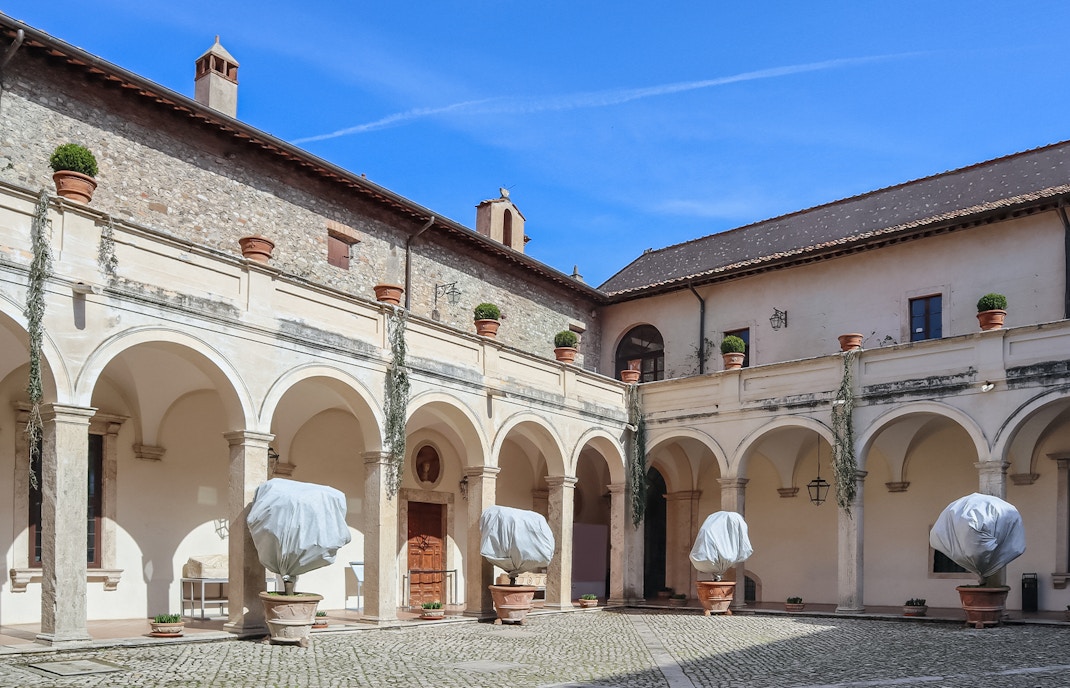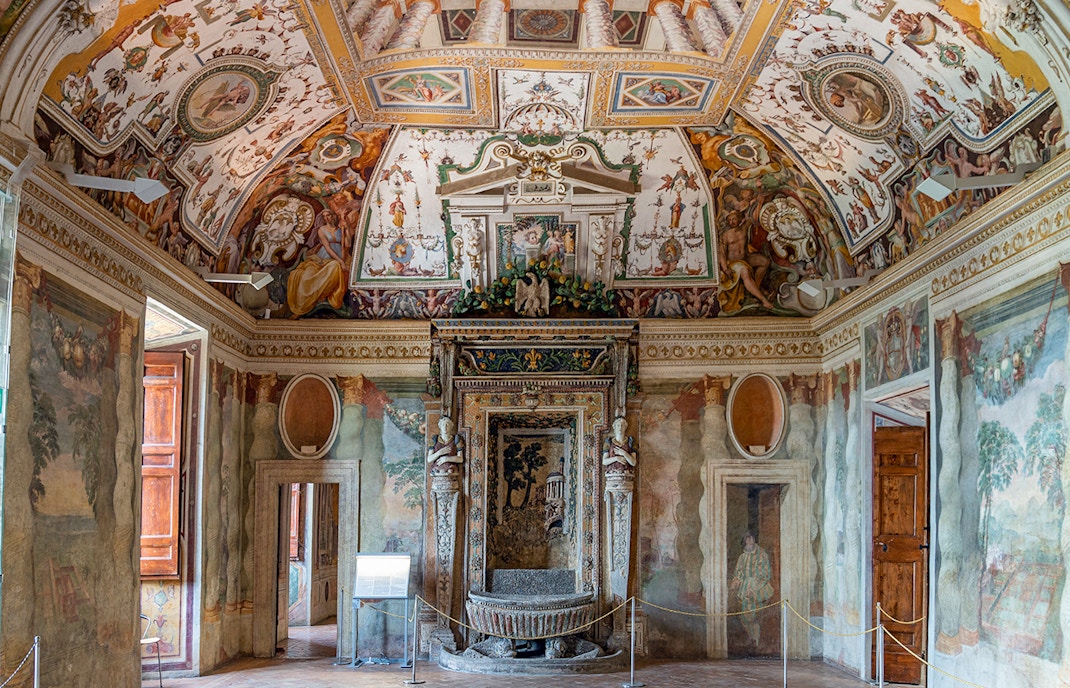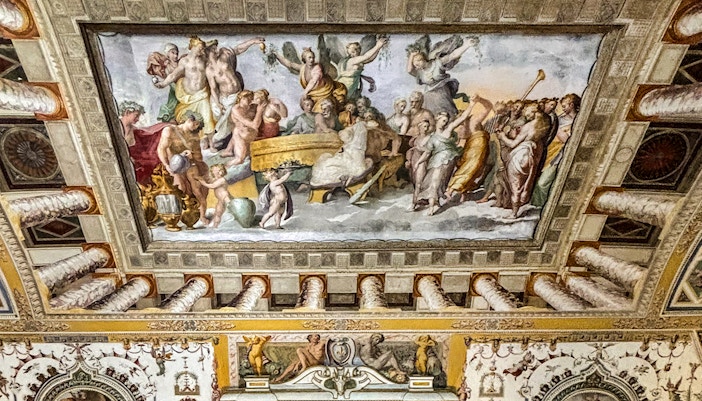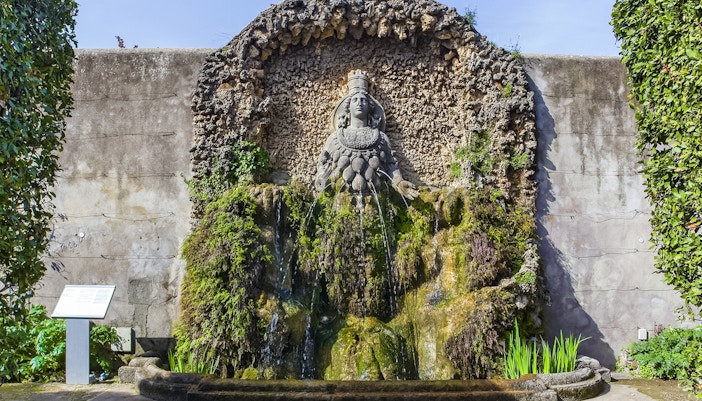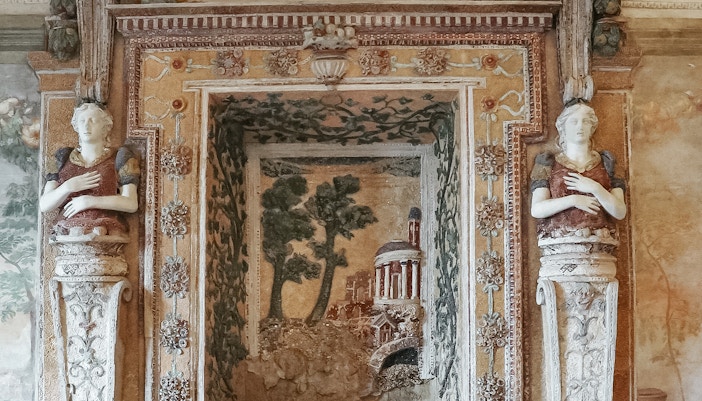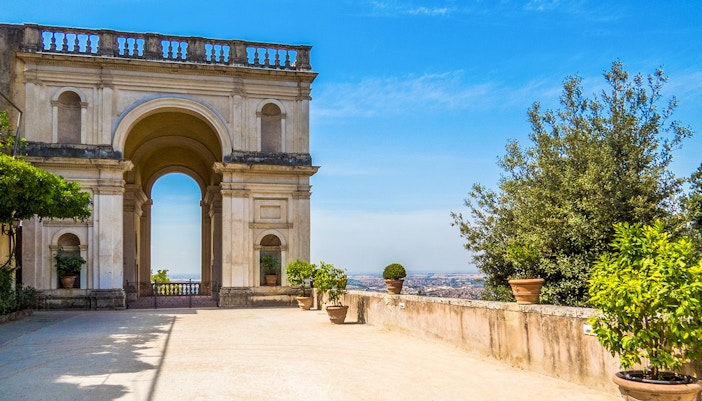The interiors of Villa d’Este are rich in Renaissance and Mannerist architectural styles:
- The symmetrical designs, harmonious proportions, and meticulous attention to detail form the core of Renaissance ideals - beauty and balance.
- The extensive use of classical columns, arches, and pilasters highlights the influence of ancient Roman architecture. Frescoes and elaborate stucco work on the ceilings and walls create a truly luxurious setting.
- Another hallmark is the seamless integration of indoor and outdoor spaces, with large windows and terraces offering breathtaking views of the beautifully landscaped gardens.
